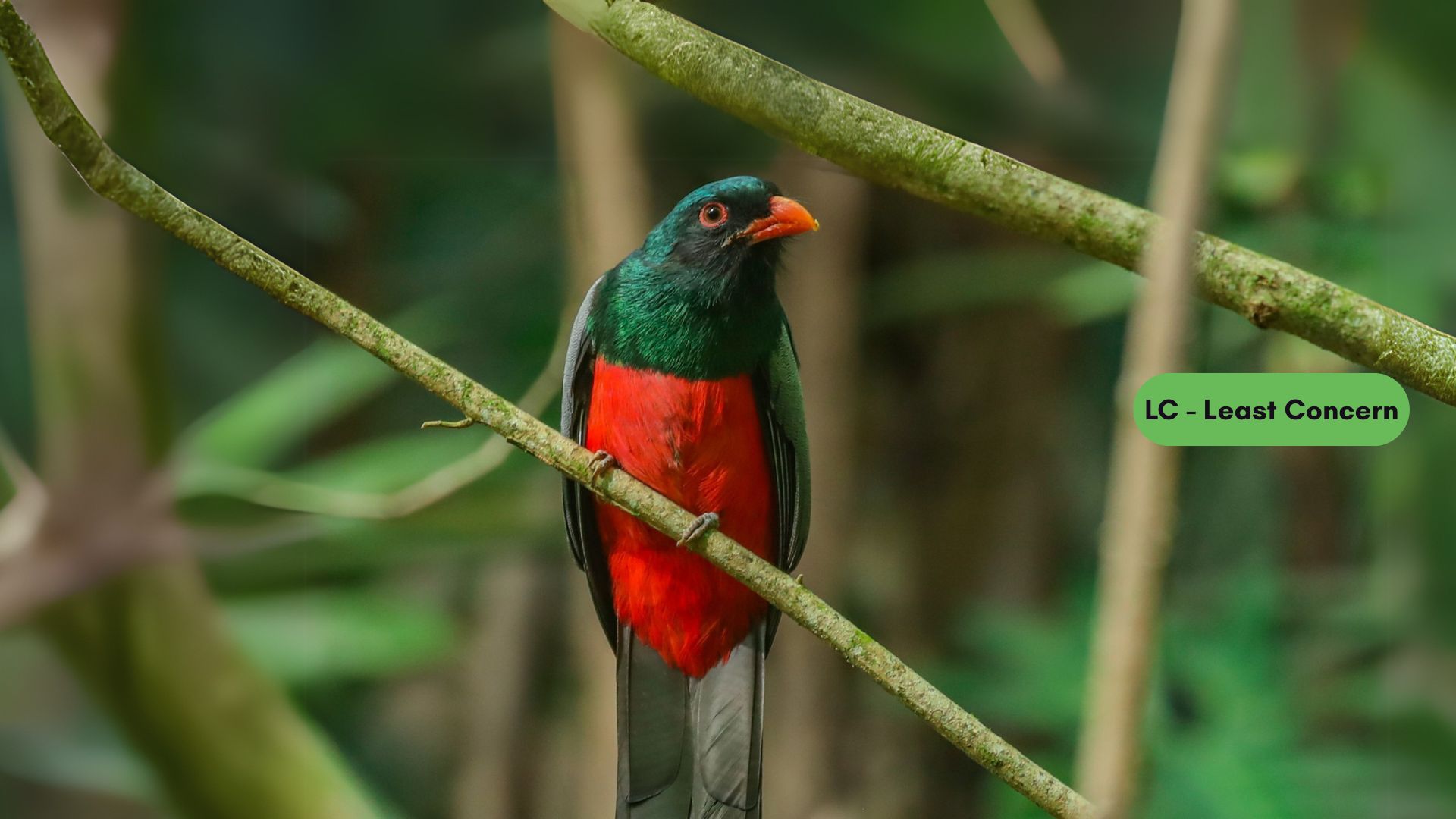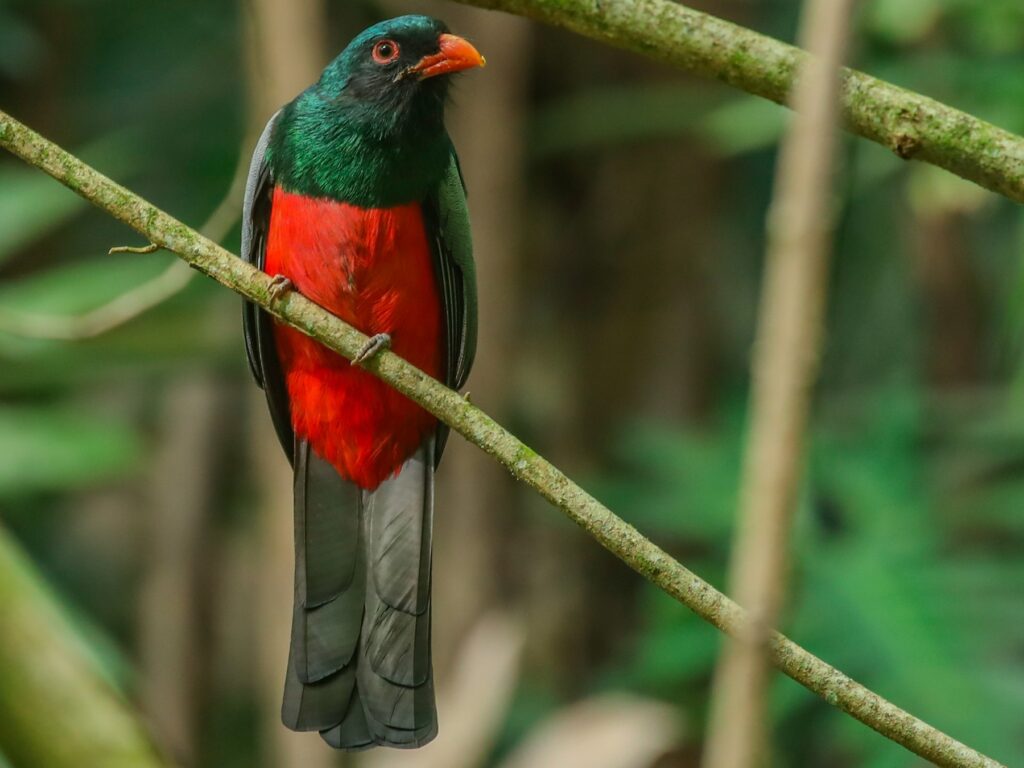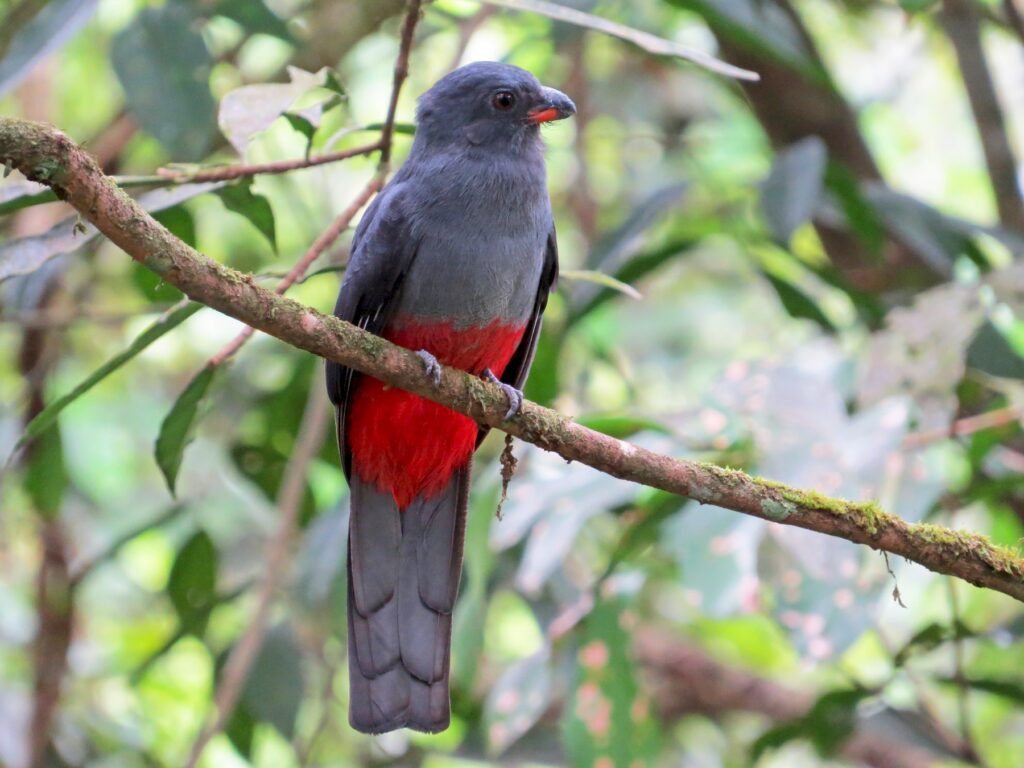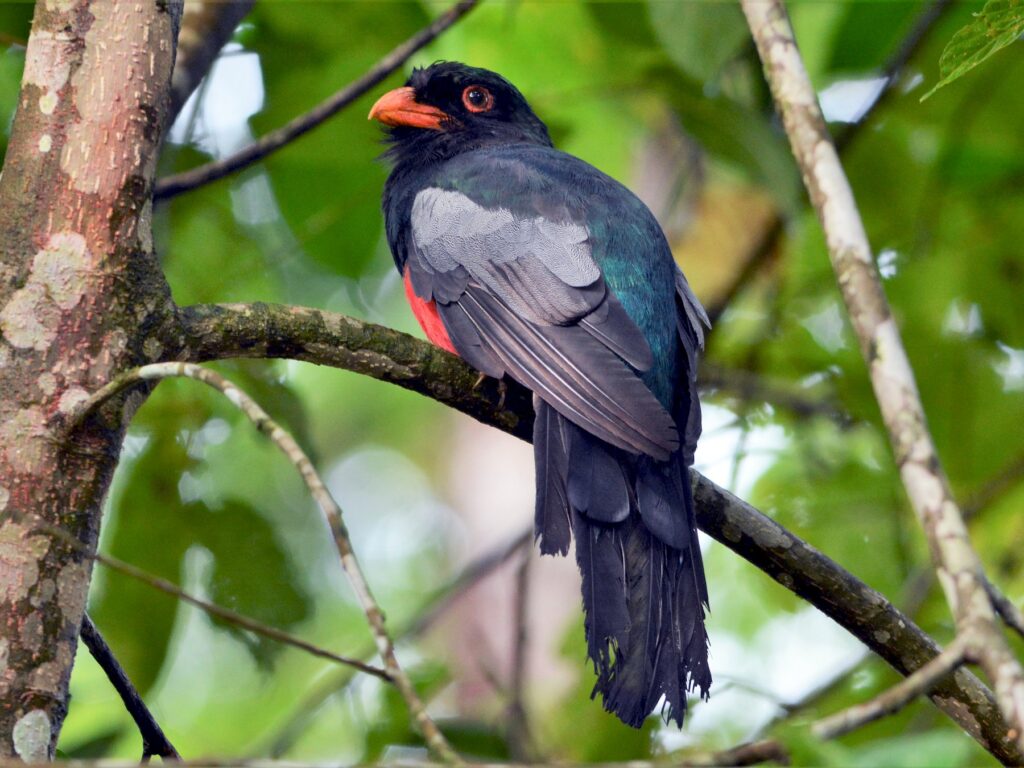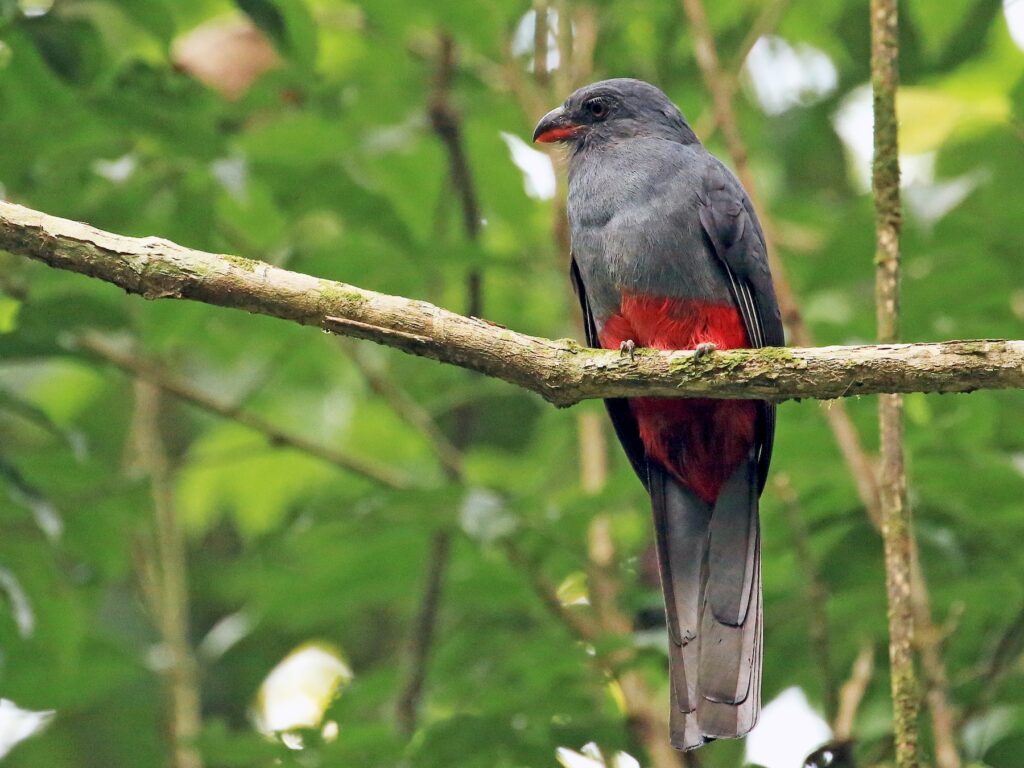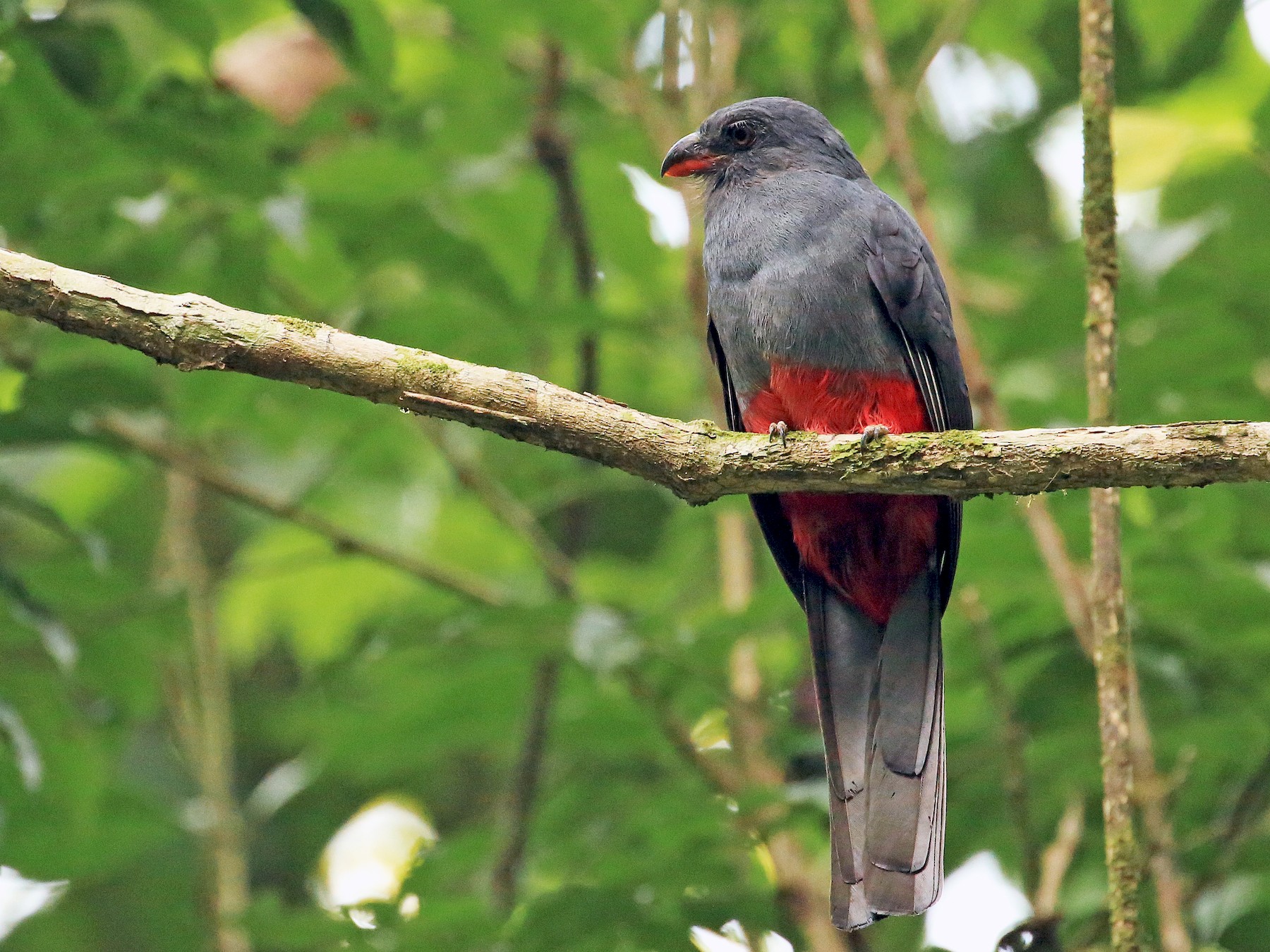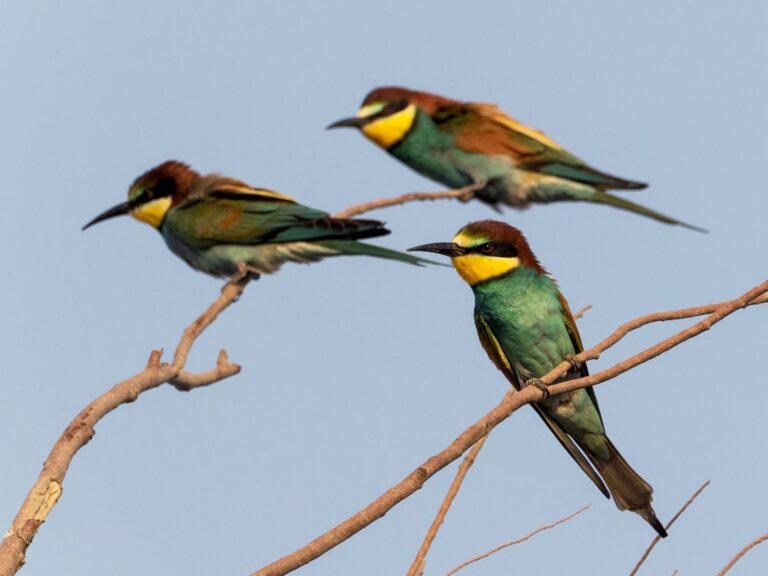Slaty-tailed Trogon: The Vibrant Jewel of Central America’s Rainforests
The Slaty-tailed Trogon, or Trogon massena if you want to get scientific, stands out as a striking bird mostly hanging around Central and South America. It belongs to the Trogonidae family—think of them as the rainforest’s show-offs, always decked out in wild colors and hanging out in lush, tropical spots.
What really grabs you about the Slaty-tailed Trogon is that vivid plumage—blue, green, chestnut—almost like someone painted it for fun. It’s hard not to spot this bird when you’re scanning the canopy, even if you’re not a hardcore birder.
These birds love moist, dense forests. You’ll find them quietly perched or swooping down for a snack, either insects or fruit.
Birdwatchers and researchers seem pretty fascinated by their behavior, especially those odd, echoing calls that ring out in the forest. The Slaty-tailed Trogon helps out its home turf by spreading seeds and eating insects, so it’s not just a pretty face.
Key Takeaways
- The Slaty-tailed Trogon belongs to the Trogonidae family and sports some seriously colorful feathers.
- You’ll find this species in the humid, tropical forests of Central and South America.
- It plays a role in the ecosystem by spreading seeds and helping keep insects in check.
Sign Up for Our Monthly Newsletter
Every month we send out our newsletter about interesting (and sometimes quirky) things happening in the world of birding. Give it a try!
Taxonomy and Classification
Let’s get into where the Slaty-tailed Trogon fits in the bird family tree. Its place in the Trogon family tells us a lot about its quirks and its job in the ecosystem.
Relation to the Trogon Family
The Slaty-tailed Trogon (Trogon massena) sits comfortably in the Trogonidae family. This group includes a bunch of other trogons, all known for their wild colors and oddball looks.
People sometimes call trogons “near passerines” because they share a few traits with songbirds, even if their ancestry took a left turn somewhere. There are about 39 trogon species, all showing off their own weird and wonderful adaptations.
Scientists slot the Slaty-tailed Trogon into the Trogoniformes order. Every trogon fits in here, and you’ll mostly find them in the tropics.
Slaty-Tailed Trogon Species Overview
If you spot a bird with slate-blue feathers and bright underparts, you’re probably looking at a Slaty-tailed Trogon. They pop up in forested spots from Central America down into parts of South America.
Taxonomically, it’s a Trogonidae member, joining a family that’s basically a parade of color and pattern variety. You’ll often see these birds in pairs or small groups, not big crowds. Their menu? Mostly fruit, insects, and the occasional invertebrate. If you’re curious about the bigger trogon picture, check out this resource on trogon species diversity.
Physical Description
The Slaty-tailed Trogon just looks different—there’s no mistaking it for another bird. Its colors and shape set it apart right away.
Distinctive Feathers and Coloration
This bird’s plumage is the main event. Most of its feathers are a deep, slate-gray, almost smoky in the right light. But then—bam—a red belly jumps out at you, bold against all that gray. That splash of color isn’t just for show; it’s a big deal in courtship.
Its orange bill stands out, too. That broad beak is perfect for snatching up fruit and insects. All the color makes the Slaty-tailed Trogon easy to pick out in the wild.
Sexual Dimorphism: Males and Females
Males and females don’t look quite the same. Males show off brighter colors, especially that red belly.
Females go for a softer look, with a paler belly that ranges from light orange to a gentle pink. It’s subtle, but you’ll notice if you look twice. Males tend to be a bit bigger, with a wider bill. The females, when picking a mate, usually go for the flashier guys—guess that’s bird dating for you.
Flight and Bodily Adaptations
The Slaty-tailed Trogon has some neat tricks for flying. Its wings are short and broad, letting it zip through dense branches with ease. Its legs are kind of weak, honestly—not made for walking much. They’re built for gripping branches, not hiking around.
That body design fits its tree-dwelling lifestyle. The bird flits from branch to branch, always on the lookout for food. Those feathers and that shape make it a pro at quick, nimble flights.
Distribution and Habitat
The Slaty-tailed Trogon really makes its home in Central and South America. Let’s break down where you’ll find it and what kind of forests it likes best.
Geographical Range
This bird pops up in southeastern Mexico, northern Central America, and Panama. Its range stretches all the way to northwestern Ecuador. When it’s on the move, it heads for areas with plenty of food. It mostly sticks to lowland forests, which are perfect for nesting. Costa Rica is a bit of a hotspot for sightings.
Preferred Ecosystems
The Slaty-tailed Trogon goes for humid, tropical forests packed with dense greenery. It likes both old-growth (primary) and newer (secondary) forests, and you’ll often find it in cool, misty cloud forests.
These forests are loaded with insects and fruit, which is basically a buffet for the trogon. Fruit trees, especially, draw them in when it’s time to breed. They like places where they can get to both the canopy and the understory.
Arboreal Habits and Canopy Use
This bird spends nearly all its time up in the trees. It perches quietly, scanning for its next meal with sharp eyes.
The Slaty-tailed Trogon can weave through the thick canopy like it’s nothing. It usually forages in the middle layers, where fruit is easy to reach. Living up high helps it dodge ground predators and find plenty of snacks.
For nesting, it uses tree cavities or abandoned woodpecker holes—real tree-dweller stuff. Its love for the upper forest layers highlights its role as a fruit eater and insect hunter.
Behavior and Ecology
Slaty-tailed Trogons have some quirky behaviors that help them get by. Their calls and perching habits say a lot about how they live and survive.
Vocalizations and Calls
These birds make some unmistakable sounds. Males belt out sharp, clear notes that cut through the forest air, especially when they want to impress a mate or claim territory.
You’ll hear these calls most during breeding season. The patterns and rhythms can even give away their mood or intentions if you listen closely. Birdwatchers rave about the trogon’s melodious calls—catching one in the wild is a real treat.
Perching and Social Habits
This species likes to perch upright, usually somewhere up in the canopy. From there, it can spot food and keep an eye out for anything suspicious. Most of the time, you’ll see them alone or in pairs, especially when they’re breeding. Sometimes, they join small mixed-species flocks, but they don’t do big crowds.
When they’re foraging, they use subtle cues—almost silent communication—to tip each other off about food. Their flight is more about short bursts, perfect for darting through tangled branches. If you want to dig deeper, check out this study on their vocalizations and another observation of social habits.
Diet and Feeding
The Slaty-tailed Trogon’s diet is a mix of insects and fruit. This combo keeps them going, even when food sources shift with the seasons.
Primary Food Sources
They mostly eat insects and fruit. Insects are a big deal, especially during breeding season when they need extra protein for the chicks—think beetles, caterpillars, ants, that sort of thing.
But they’re not picky. They’ll also go for berries, figs, and whatever small fruit they can find in the forest. Their menu changes depending on what’s in season and what the forest offers up.
Feeding Techniques
Slaty-tailed Trogons try out a few different tricks when they’re hungry. Usually, they’ll sit quietly on a branch, just watching for insects below.
When they spot something tasty, they don’t waste time—they swoop down and snatch it up. This move works well for grabbing quick insects before they can dart away. Fruit’s a big part of their diet too. They use those sturdy bills to yank or tear fruit right off the trees.
Figs are a favorite. Sometimes they swallow them whole, other times they’ll peck at them to get the pulp out. If you want more detail about their eating habits, there’s a solid study on Old and New World Trogons that digs deeper.
Frequently Asked Questions
The Slaty-tailed Trogon’s got some pretty specific tastes and a real knack for picking out places to live. Spotting one isn’t always easy, but once you know what to look for, it gets a lot more interesting.
What is the typical diet of a Slaty-tailed Trogon?
Mostly, they go for fruits, insects, and sometimes small animals. Berries and soft fruits make up a good chunk of what they eat. They help spread seeds around, which is honestly a pretty important job in their ecosystem.
What habitats are commonly associated with the Slaty-tailed Trogon?
You’ll usually find them in tropical or subtropical forests. They love places with dense vegetation and stick to the understory of rainforests. Staying low helps them find food and dodge predators.
How can one identify the female Slaty-tailed Trogon from the male?
Females look a bit more understated. Their colors are muted—think brownish-grey with a lighter belly. Males, on the other hand, show off those bold green and blue feathers. It’s not too hard to tell them apart if you get a good look.
What distinguishes the Slaty-tailed Trogon from other trogon species?
The tail is the giveaway—it’s got that signature slate color. The bird’s color combo is pretty unique, honestly. Its bill shape and feather patterns help set it apart too, if you’re into those details.
Is the Slaty-tailed Trogon considered an endangered species?
Right now, it’s not on the endangered list. Still, habitat loss is a real issue for them. Protecting their forests makes a difference, even if they’re not in immediate danger.
What are the primary behavioral traits of the Slaty-tailed Trogon?
The Slaty-tailed Trogon usually keeps to itself and has a pretty quiet way about it. You’ll often spot one just hanging out, perched and waiting for the right moment to hunt. They’ve got these distinctive calls, too. Each bird’s call sounds a bit different, which probably helps them talk to each other in those thick forests.
